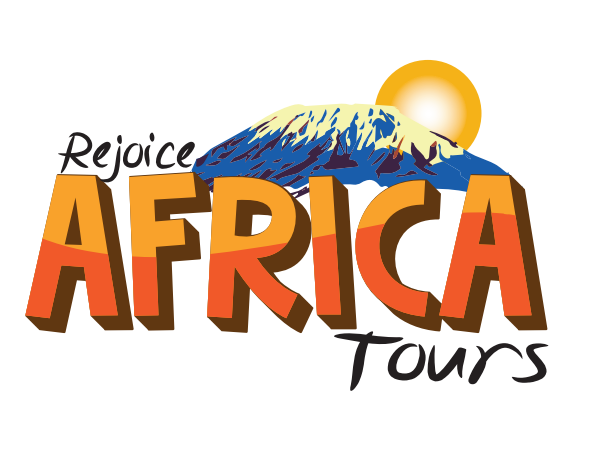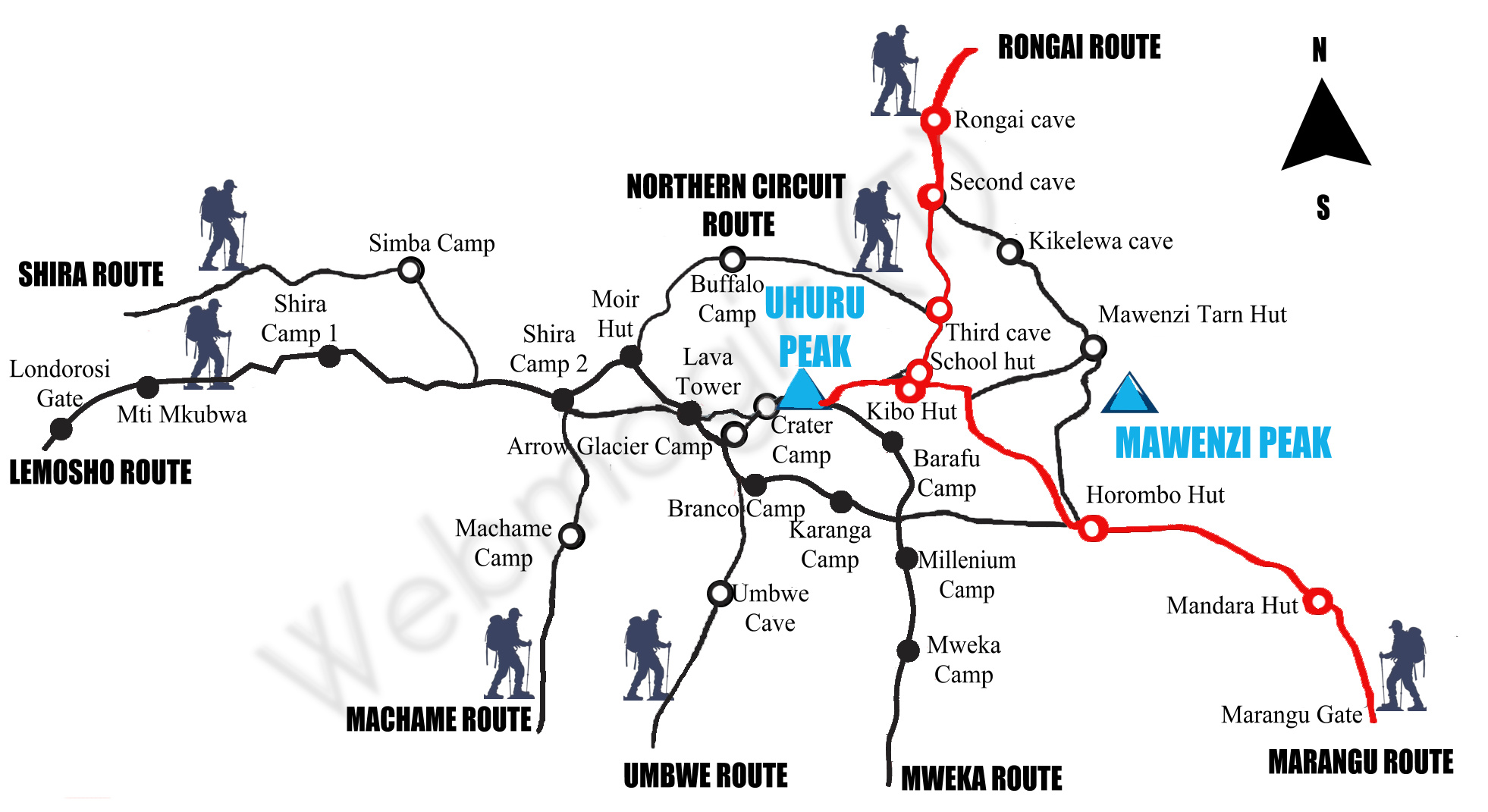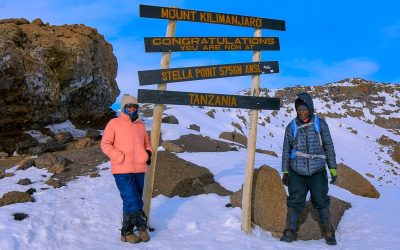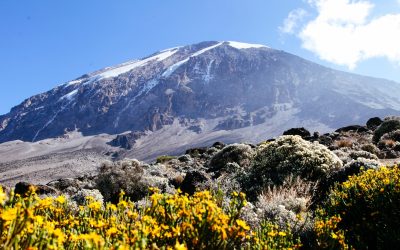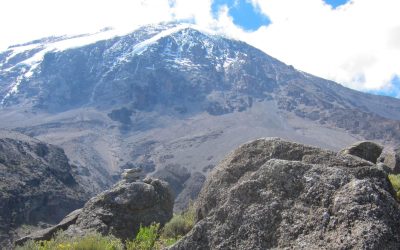Kilimanjaro Trekking Overview, Rongai Route
The Rongai Route is the only trail that approaches Mount Kilimanjaro from the northern side, near the Kenyan border. It is known for its low crowds, dry conditions, and gradual ascent, making it an excellent choice for trekkers seeking a quieter and more scenic experience. The descent follows the Marangu Route, allowing trekkers to experience both sides of the mountain.
Expert Suggestions
Choosing the Right Itinerary
6-Day Itinerary: Suitable for experienced trekkers with prior high-altitude exposure.
7-Day Itinerary: Recommended for beginners or those seeking better acclimatization.
Acclimatization Tips
Hydrate frequently to prevent altitude sickness.
Follow a slow and steady pace to adjust to the altitude.
Include acclimatization hikes, such as the trek to Mawenzi Tarn.

Saidi Makwende
Kilimanjaro Mountain Guide
is a Kilimanjaro Mountain Guide with a 90% summit success rate, and a seasoned videographer/photographer specializing in cultural, travel, and adventure content with strong skills in camera work, drone operation, and editing.
Rongai Route Map
Rongai Route Schedule
7 -Day Trek/9-Day Tour
Day 1: Arrival in Arusha/Kilimanjaro
Day 2: Rongai Gate to Simba Camp
Experience the breathtaking beauty of Day 2 as you journey from Rongai Gate to the enchanting Simba Camp, where stunning landscapes and vibrant wildlife await you at every turn, creating unforgettable memories that will last a lifetime.
- Elevation: 1,950m (6,398ft) to 2,650m (8,694ft)
- Distance: 8 km (5 mi)
- Hiking Time: 4-5 hours
- Habitat: Montane forest
Important Note
- Hydration: Drink over 4 liters of bottled water daily, frequently and in small amounts.
- Altitude sickness prevention: Consider high-altitude aid medicine to reduce discomfort. Many climbers take these pills before their ascent.
- Medical consultation: Consult your doctor before the trip to discuss allergies or health concerns.
- Nighttime symptoms: Due to reduced breathing patterns, oxygen intake decreases, which may cause headaches or sickness.
- Self-monitoring: Pay attention to your body’s response to altitude. Inform your guide if you experience any symptoms of altitude sickness.
- Guidance: Travel managers will provide additional specific details in your itinerary.
Day 3: Simba Camp to Second Cave
Experience the breathtaking journey from Simba Camp to Second Cave as you traverse stunning landscapes and immerse yourself in the natural beauty surrounding you. Each step brings new wonders, from the vibrant flora to the captivating wildlife, making this trek an unforgettable adventure. Embrace the tranquility of the serene environment while enjoying the camaraderie of fellow travelers, creating memories that will last a lifetime. This leg of your journey promises not only physical challenge but also moments of reflection and appreciation for the breathtaking vistas that unfold along the way.
- Elevation: 2,650m (8,694ft) to 3,450m (11,319ft)
- Distance: 6 km (3.7 mi)
- Hiking Time: 3-4 hours
- Habitat: Moorland
Day 4: Second Cave to Kikelewa Camp
As we journey from the Second Cave to Kikelewa Camp, prepare to be captivated by the stunning vistas that unfold along the trail. This segment of our trek presents a unique blend of natural beauty and serene landscapes, where the rich flora and fauna thrive in harmony. Keep your senses alert to the sounds of nature and the vibrant colors that paint the scenery, offering a peaceful respite and a chance to connect with the magnificent wilderness surrounding us. Each step brings us closer to our destination, with memories waiting to be made in the heart of this enchanting adventure.
- Elevation: 3,450m (11,319ft) to 3,600m (11,811ft)
- Distance: 6 km (3.7 mi)
- Hiking Time: 3-4 hours
- Habitat: Moorland
Day 5: Kikelewa Camp to Mawenzi Tarn
Day 5 takes you from Kikelewa Camp to the breathtaking Mawenzi Tarn, a journey through stunning landscapes that showcase the diverse beauty of the region. As you trek along this scenic path, you’ll experience the unique flora and fauna that thrive in the high altitudes, while being captivated by the striking views of Mawenzi Peak, which looms majestically in the distance. The trail offers a mix of challenging terrains and rewarding vistas, making it an unforgettable day of exploration and adventure in one of nature’s most remarkable settings.
- Elevation: 3,600m (11,811ft) to 4,330m (14,206ft)
- Distance: 5 km (3.1 mi)
- Hiking Time: 4-5 hours
- Habitat: Alpine desert
Day 6: Mawenzi Tarn to Kibo Hut
As you ascend from Mawenzi Tarn to Kibo Hut, the environment transforms dramatically, presenting an exhilarating blend of breathtaking views and challenging terrain. The trail winds through fascinating landscapes, including rocky paths and sparse vegetation, offering a sense of adventure as you approach the famed summit of Kilimanjaro. Keep your energy up and remain hydrated, as the altitude begins to take its toll, reminding you of the extraordinary journey ahead. Embrace the beauty around you, and prepare for the final push toward the iconic peak.
- Elevation: 4,330m (14,206ft) to 4,700m (15,419ft)
- Distance: 9 km (5.6 mi)
- Hiking Time: 5-6 hours
- Habitat: Alpine desert
Day 7: Kibo Hut to Uhuru Peak to Horombo Hut
Embarking on Day 7 from Kibo Hut to Uhuru Peak and then to Horombo Hut is an exhilarating journey that showcases the breathtaking beauty of the mountain. As you ascend to the summit, prepare for a challenging yet rewarding experience that reveals stunning vistas and a profound sense of achievement. The descent to Horombo Hut offers a chance to reflect on your adventure while surrounded by the captivating landscapes of Kilimanjaro.
- Elevation: 4,700m (15,419ft) to 5,895m (19,341ft) (Uhuru Peak) to 3,720m (12,205ft)
- Distance: 21 km (13 mi)
- Hiking Time: 12-15 hours
- Habitat: Arctic to moorland
Day 8: Horombo Hut to Marangu Gate
Experience the breathtaking descent from Horombo Hut to Marangu Gate, where each step unveils the stunning beauty of the landscape around you. As you traverse the scenic trails, take in the lush surroundings and the vibrant flora that flourish in this pristine environment. Along the way, you’ll encounter the rich cultural heritage of the local communities, adding depth to your journey. This descent not only offers a chance to reflect on your incredible adventure but also marks the transition from the serene highlands back to the vibrant lowlands, making it a memorable part of your trekking experience.
- Elevation: 3,720m (12,205ft) to 1,860m (6,102ft)
- Distance: 20 km (12.4 mi)
- Hiking Time: 5-7 hours
- Habitat: Rainforest
Day 9: Departure from Tanzania
- Transfer to Kilimanjaro International Airport
- Optional excursions or relaxation in Moshi/Arusha
Important Note
If your travel plans require you to check out later than 10:00 AM, there is the convenience late check-out option for an additional fee, especially helpful for those with evening flights.
Kilimanjaro Trekking FAQs
When is the best time to trek Kilimanjaro?
The dry seasons (June–October & January–March) offer the best conditions.
WHAT IS THE BEST ROUTE FOR MOUNTAIN KILIMANJARO TREKKING?
The best Kilimanjaro climbing route depends on your priorities—whether it’s scenery, acclimatization, difficulty, or crowd levels. Here’s a breakdown of the top routes:
1. Lemosho Route – Best for Scenery & Acclimatization
- Duration: 7-8 days
- Pros: Stunning landscapes, fewer crowds, excellent acclimatization
- Cons: Longer duration increases cost
2. Machame Route (“Whiskey Route”) – Most Popular & Scenic
- Duration: 6-7 days
- Pros: Beautiful views, good acclimatization profile
- Cons: Can be crowded during peak seasons
3. Rongai Route – Best for Fewer Crowds
- Duration: 6-7 days
- Pros: Approaches from the north, less rainfall, fewer climbers
- Cons: Less varied scenery
4. Northern Circuit Route – Best for Acclimatization & Success Rate
- Duration: 9 days
- Pros: Longest route, best acclimatization, 360-degree views
- Cons: Higher cost due to extended duration
5. Marangu Route (“Coca-Cola Route”) – Easiest & Only Hut Accommodation
- Duration: 5-6 days
- Pros: Shortest route, hut accommodations instead of tents
- Cons: Lower success rate due to rapid ascent
For the highest summit success rate, Lemosho and Northern Circuit are excellent choices. If you prefer a shorter trek, Machame or Rongai are great options.
Is It Possible to Trek Kilimanjaro During Rainy Season?
Yes, it is possible to trek Kilimanjaro during the rainy season, but it comes with challenges. Kilimanjaro has two rainy seasons:
- Long rains: March to early June (heavier rainfall, muddy trails).
- Short rains: November to early December (lighter rainfall, cooler temperatures).
Pros of Rainy Season Trekking
- Fewer crowds – The mountain is much quieter.
- Lush scenery – The rainforest zone is especially beautiful.
- Snow at the summit – Creates a stunning landscape.
Cons of Rainy Season Trekking
- Wet and muddy trails – Makes hiking more difficult.
- Reduced visibility – Clouds and fog may block views.
- Cold and damp conditions – Gear may stay wet for days.
Best Routes for Rainy Season
- Rongai Route – Approaches from the north, which gets less rain.
- Marangu Route – Has hut accommodations, keeping trekkers dry.
If you’re considering a rainy season trek, packing waterproof gear and choosing the right route can make a big difference
HOW DO I GET A VISA?
The cost of a tourist visa is US$50 per person and $100 for American citizens, to be paid in cash. We recommend buying the visa upon arrival at the airport in Tanzania. It is very easy to buy the visa upon arrival, and it is not necessary to arrange everything beforehand. Buying a visa upon arrival does not take much time at all. Forms can be obtained at the airplane/airport/border upon arrival. All you need to do is fill out the form and pay the fee, and you will get a visa stamped in your passport. Please make sure you have all the necessary jabs. A Yellow Fever jab, for example, is one legal requirement for being allowed to enter the country. It is not necessary to bring any pictures to get your visa, but please be aware that your passport has to be valid for another 6 months after departing from Tanzania. Citizens of some countries may have to get the visa prior to departure. Make sure you check with your country’s authorities in advance.
DO I NEED TRAVEL INSURANCE?
- When considering a plan, take inventory of the components of your trip. Pre-paid vacation home rentals, car rentals, and event tickets are more unconventional items to insure, yet they can be costly if forfeited due to an unexpected circumstance. If these costs are added into the total pre-paid cost of the trip, a comprehensive travel insurance plan could protect you if your trip should be cancelled or interrupted.
- For more information go to ( worldnomads.co.uk )
DO I NEED TO TIP?
- Like many countries in Africa, Tanzania is relatively not much expensive by world standards in terms of domestic currency to foreign currency, and a lot of people rely on tipping from tourism to get by. And its definitely a big deal because it brings money to many of the service workers who work in the tourism industry and other sectors too depending on the service provided.
So before you go, you should know how much to tip in Tanzania.
WHAT IS THE WEATHER LIKE IN TANZANIA?
- Situated just south of the equator, Tanzania is a vast country with a variable climate that depends heavily on the elevation and geography of your chosen destination. Generally speaking, the weather is tropical; particularly on the coast, where heat and humidity prevail. However, the northwestern highlands are consistently cool, while the central plateau remains dry all year round
WILL I BE ABLE TO CHARGE MY DEVICES IN THE TREK?
Mount Kilimanjaro does not have electrical outlets or charging stations, so you’ll need to plan ahead to carry your personal power bank
WHAT LUGGAGE SHOULD I BRING FOR KILIMANJARO TREKKING?
Packing for Kilimanjaro is all about preparing for five different climate zones—from humid rainforest to freezing summit conditions. Here’s what you’ll need:
Essential Bags
- Duffel Bag (65-100L) – Carried by porters, holds your main gear.
- Daypack (30-40L) – You’ll carry this yourself, holding water, snacks, and layers.
- Backpack Rain Cover – Protects your gear from unexpected rain.
- Dry Bags – Keeps electronics and clothes dry.
Sleeping Gear
- 4-Season Sleeping Bag – Rated for -10°C to -20°C temperatures.
- Sleeping Mat – Adds insulation and comfort.
- Inflatable Pillow – Optional but useful.
Hydration & Accessories
- Hydration Pack (Water Bladder) – Holds 2-3 liters of water.
- Trekking Poles – Reduces strain on knees, especially on descents.
- Headlamp – Essential for summit night.
Clothing Layers
- Base Layers – Moisture-wicking tops and bottoms.
- Insulated Jacket – Essential for cold summit nights.
- Waterproof Jacket & Pants – Protects against rain and wind.
- Gloves & Hat – Keeps extremities warm.
- Hiking Boots – Sturdy, waterproof, and well-broken-in.
Can I rent trekking gear in Tanzania?
Yes, equipment rentals are available in Moshi and Arusha
Do I need to bring a tent?
No, tour operators provide high-quality tents and camping gear
WHAT KIND OF VACCINATIONS DO I NEED?
Before trekking Kilimanjaro, it’s important to ensure you’re up to date on vaccinations to protect yourself from potential health risks. Here are the key vaccinations recommended for travelers to Tanzania:
- Yellow Fever – Required if you’re arriving from or transiting through a country with a yellow fever risk.
- Hepatitis A & B – Protects against liver infections transmitted through contaminated food, water, or bodily fluids.
- Typhoid – Recommended due to the risk of contaminated food and water.
- Tetanus & Diphtheria – Ensure your routine vaccinations are up to date.
- Malaria – Anti-malarial medication is recommended if you’re spending time in low-altitude regions like Moshi and Arusha
SHOULD I BRING A FIRST AID KIT?
Basic first aid kits are available at most Tanzania lodges and camps, but you should always have one with you whenever an emergency arise. Your first aid kit should include mosquito repellent and malarial prophylactics, as well as your SPF preferred category sunscreen, antihistamine and an over-the-counter pain relieving medication, such as Aspirin, Ibuprofen, Panadol or Tylenol and a few protective bags can be included in your first aid kit for this purpose. Bring larger lightweight cover bags for protecting your bagged camera and lenses too from dust and water where required e.g. canoeing or boating safari. Other items for your first aid kit are antiseptic gel, anti-diarrhea medication, antacid tablets for indigestion, Band-Aids with antiseptic cream, prescription medications and spare eyeglasses even if you wear contact lenses.
DO WE NEED FLYING DOCTORS INSURANCE?
Yes, Flying Doctors insurance is highly recommended for Kilimanjaro trekking. While not mandatory, it provides emergency medical evacuation in case of serious altitude sickness, injury, or other health emergencies. Helicopter evacuations from Kilimanjaro can be extremely expensive, and having insurance ensures you get swift medical assistance without financial strain.
You can purchase coverage through AMREF Flying Doctors , KiliMed Air
WHAT TYPE OF FOOD?
Rejoice Africa Tours on Kilimanjaro provides nutritious, high-energy meals to keep climbers fueled for the trek. Here’s what you can expect:
Typical Meals
- Breakfast: Porridge, eggs, sausages, toast with jam or peanut butter, fresh fruit, and hot drinks like tea, coffee, or hot chocolate.
- Lunch: Packed or cooked meals including sandwiches, boiled eggs, chicken, fresh fruit, and soup.
- Dinner: A hearty meal with soup, chicken or meat, vegetable sauce, cabbage, rice, pasta, or potatoes, with fresh fruit for dessert.
- Snacks: Biscuits, peanuts, popcorn, and energy bars to keep climbers energized between meals.
Special Dietary Needs
We accommodate vegetarian, vegan, gluten-free, halal, kosher, and allergy-specific diets—just inform us in advance. Note that a separate fee may apply
WHAT ARE COMMON KILIMANJARO TREKKING SAFETY PRECAUTIONS?
Trekking Kilimanjaro is an incredible adventure, but safety is key to a successful climb. Here are some essential precautions to follow:
1. Acclimatization & Altitude Sickness
- Choose longer routes (like Lemosho or Machame) for gradual acclimatization.
- Follow the “climb high, sleep low” principle to help your body adjust.
- Drink 3-4 liters of water daily to stay hydrated.
- Recognize symptoms of altitude sickness (headaches, dizziness, nausea) and inform your guide immediately.
2. Experienced Guides & Porters
- We use certified Kilimanjaro guides who monitor your health and oxygen levels.
- Porters carry equipment and supplies, ensuring trekkers can focus on their climb safely.
3. Proper Gear & Clothing
- Wear layered clothing to adapt to changing temperatures.
- Use sturdy hiking boots with ankle support to prevent injuries.
- Bring a high-quality sleeping bag rated for sub-zero temperatures.
4. Hydration & Nutrition
- Drink plenty of water and eat high-calorie meals for endurance.
- Avoid alcohol and caffeine, as they can contribute to dehydration and altitude sickness.
5. Emergency Response & Evacuation
- Guides carry pulse oximeters to monitor oxygen levels.
- Emergency bottled oxygen is available for altitude sickness.
- Helicopter evacuation is available in severe cases.
Kilimanjaro Trekking Pricing Terms
Price Includes the following:
- Airport transfers from Kilimanjaro Airport,
- Hotel in Moshi on B/B,
- Transport from Hotel to Kilimanjaro gate,
- all park fees,
- salaries of guides/porters/cook
- all meals on the mountain,
- clean safe drinking water,
- accommodation equipment
- Government tax,
- certificate of climbing,
- first aid,
- oxygen bottle,
- Park rescues fee,
- transfer to Moshi rest, shower, and then evening go to Arusha (check safari section day oo)
Price Excludes the following:
- Flight to Tanzania,
- Entry VISA,
- Climbing gears (available for rent),
- Tips to guides, porters, and
- Items of a personal nature.
For your preparations, we also attach a list of personal hiking gears to prepare, and also you may rent on arrival.
TRAVEL INSURANCE: We have emergency helicopter rescue operated by a private company, and We advise climbers/visitors to buy insurance which includes High mountains. (world nomads, IMG, passport card- examples of insurance)
